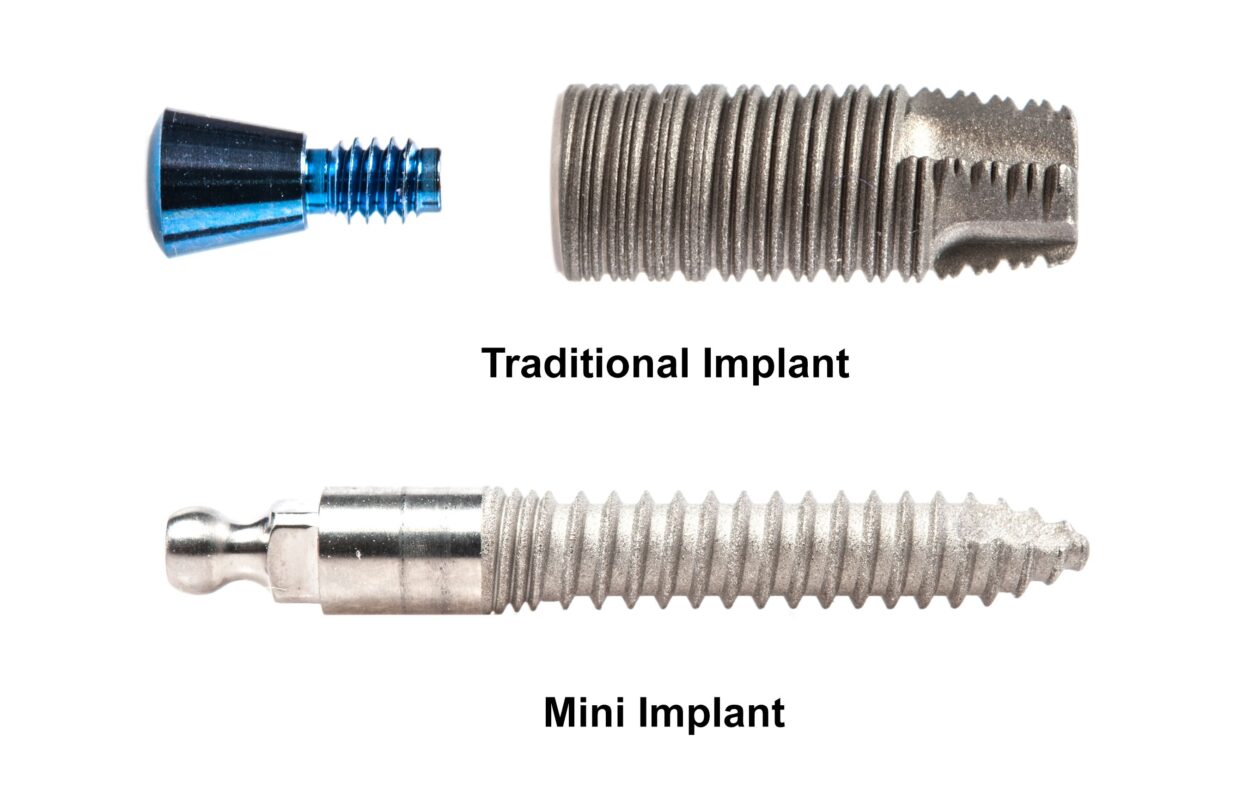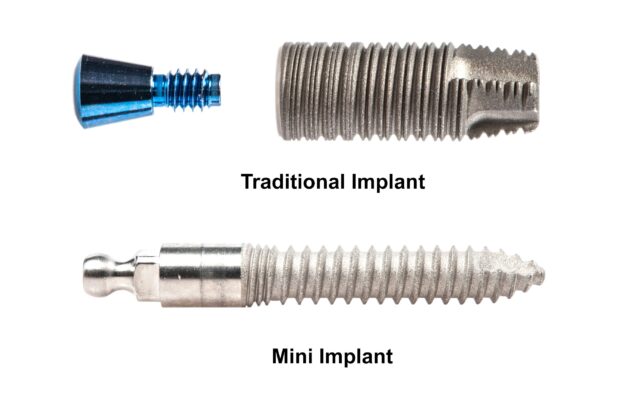In the ring, two fighters step forward as the crowd erupts. On one side, the towering, muscular boxer—biceps bulging, shoulders broad—cuts an imposing figure. Everyone assumes this is the sure winner. After all, bigger means better, right? But across the ring stands a different kind of fighter: lean, compact, with a build sculpted for precision, speed, and efficiency. This contender doesn’t rely on brute force. Instead, it’s all about strategy—balanced strength, explosive power, and agility. The crowd might cheer louder for the big guy, but seasoned fans know better. You see, boxing isn’t just about size; it’s about who can move, adapt, and outlast their opponent. The lean fighter, with their quick footwork and energy conservation, often comes out on top. The same principle applies when choosing between mini dental implants vs. traditional implants.
At first glance, you might favor the bigger, bulkier implant, thinking it will deliver the “knockout” solution. However, mini dental implants prove that the leaner, more agile approach can provide powerful results without the heavy lifting. Sometimes, smaller truly means smarter.
Why Should I Consider Dental Implants?
It’s easy to be tempted by a quick fix when choosing a tooth replacement solution. A bridge, a partial denture, or even leaving the gap untreated might seem the simplest route. But as you explore your options, it’s essential to ask yourself one critical question: how will this choice impact my long-term health?
Missing teeth set off a chain reaction in your mouth and beyond. Over time, the surrounding teeth may shift into the open space, creating alignment and bite problems. This misalignment can cause excessive wear on your remaining teeth. Perhaps most importantly, the absence of tooth roots deprives your jawbone of the stimulation it needs to stay strong, triggering bone loss.
Bone loss is one of the most significant and least visible consequences of missing teeth. Here’s how it happens: when natural teeth are intact, their roots anchor into the jawbone and provide constant stimulation during everyday activities like chewing. This stimulation sends a signal to your body to maintain the bone tissue in that area. Without tooth roots, the body assumes the bone is no longer needed and begins a process called resorption, where it reabsorbs the bone for use elsewhere.
A dental implant is a small titanium post that we place directly into your jawbone. It acts like a natural tooth root, providing the stimulation your jawbone needs to stay healthy. Titanium is biocompatible, meaning it works naturally with your body. It fuses directly with the bone in a process called osseointegration, creating a strong, stable foundation for a crown, bridge, or denture.
Mini Dental Implants vs. Traditional Implants: How Are They Different?
Dental implants have revolutionized tooth replacement, giving countless patients a second chance at a confident smile and restoring oral function. But here’s a fact you might not know: not all dental implants are created equal. These days, there’s a solution for nearly everyone, thanks to advancements that have made implants more inclusive than ever before.
If we rewind a bit, the “ideal” dental implant candidate checked a very specific set of boxes: missing teeth, in excellent health, with plenty of jawbone to support the implant—and the budget to make it happen. Why the long list? At one point, the only option available was the traditional dental implant, which is about 5 millimeters in diameter and consists of multiple components. Because of its size, a traditional implant requires a solid foundation of jawbone to anchor securely. Patients with bone loss often didn’t qualify, and options for them were limited.
Fast-forward to today and everything has changed. Mini dental implants are less than 3 millimeters in diameter and consist of a single slender post. Thanks to their slender build, mini implants can work wonders in areas with reduced bone density, a common challenge for those who’ve experienced tooth loss. Instead of requiring significant bone volume like traditional implants, mini implants can fit snugly into smaller spaces, making them an option for a much wider range of patients.
Mini Dental Implants vs. Traditional Implants: Choosing the Right Fit
Fear of surgery, concerns about bone loss, and worries over cost are just a few of the reasons why some people hesitate when considering dental implants. But mini dental implants address all these concerns, making them an ideal solution for many patients.
One of the biggest advantages of mini dental implants is their cost-effectiveness. Traditional implants often require additional procedures like bone grafting, which adds time, complexity, and expense to the process. With their smaller size, we can usually place mini implants without these preparatory surgeries. Their streamlined design means less material is needed, and the simplified placement process typically involves fewer appointments. This key benefit reduces costs and saves time.
Mini dental implants also provide a practical solution for those worried about surgery. Their placement is more straightforward and generally less complex than traditional implants. This simplicity translates to quicker recovery times, so patients can return to their normal routines sooner.
Restore Your Smile and Oral Health With Mini Dental Implants
Mini dental implants pack the precision, power, and adaptability you need to win the battle against tooth loss. Schedule a free consultation today, and let us show you how mini dental implants can transform your smile, restore your confidence, and protect your long-term oral health. The bell has rung—it’s time to make your move!
Stay updated on the latest advancements in mini dental implants by following us on Facebook and Instagram!


